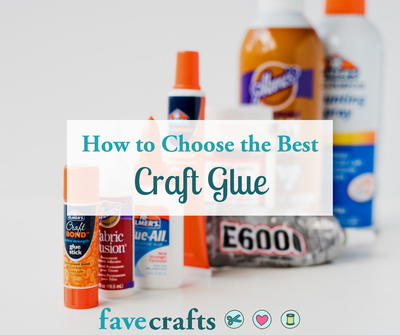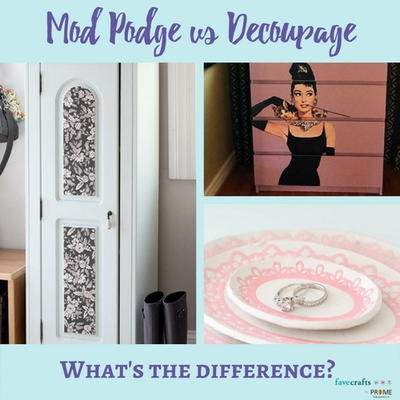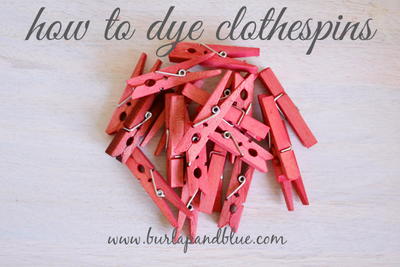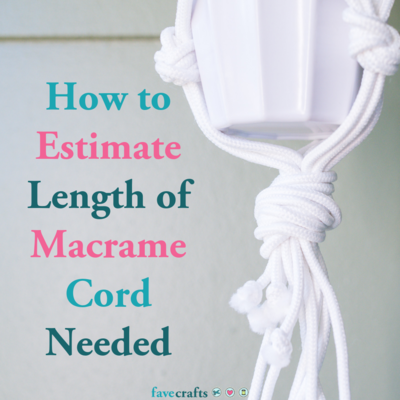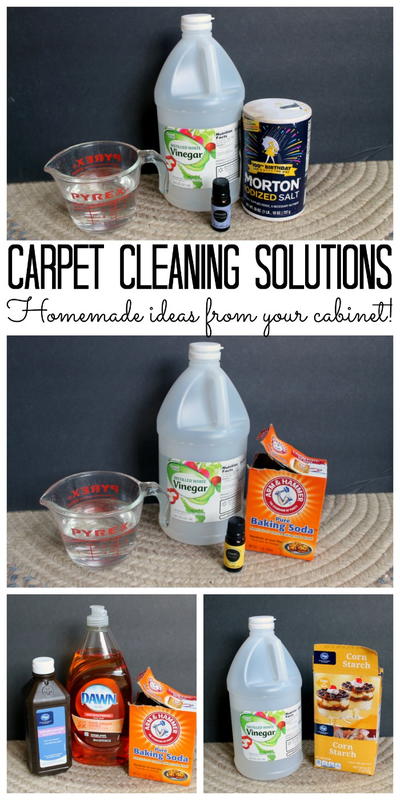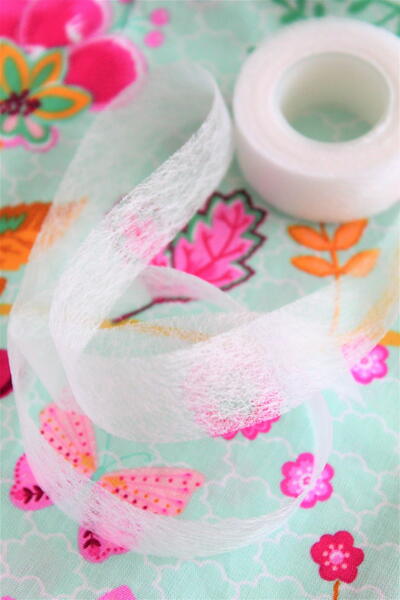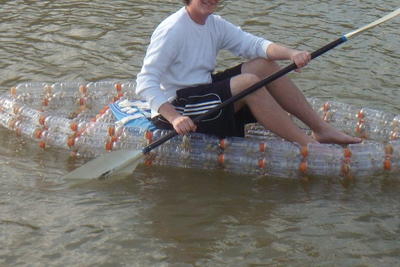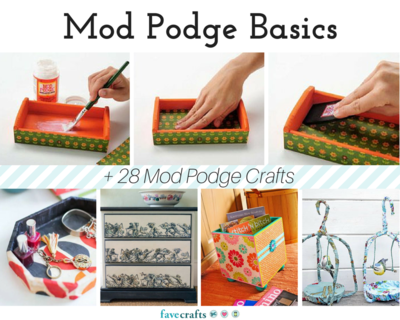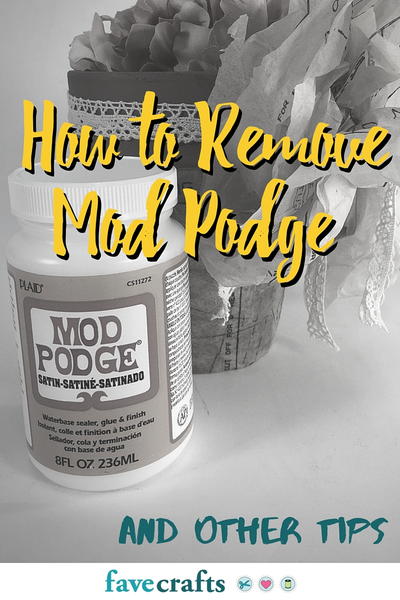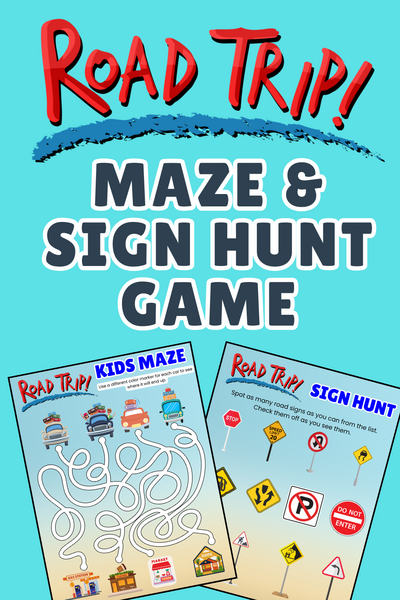Craft Glue 101: How to Choose the Best Craft Glue
Choose the perfect glue every time with this one-stop guide to craft glue!
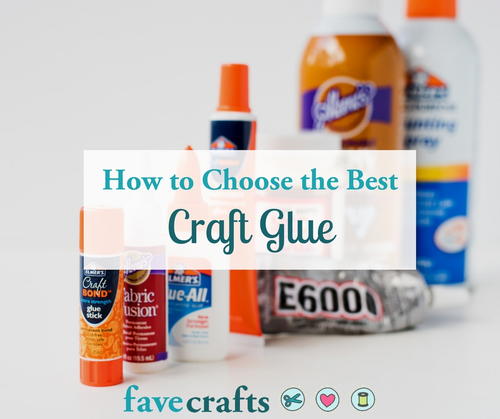
Any experienced crafter knows that you can't just use any old glue with every project. Sure, there are some glues that are incredibly versatile, like mod podge. But not if you're not careful, you might get yourself into some sticky situations. (No pun intended.)
This complete guide for How to Choose the Best Craft Glue will help you make the right choice.
Every crafter and DIYer has had their share of adhesive mishaps. Some of us had to learn the hard way that superglue and cotton don't mix well! Share your best glue advice down the in the comment section.
If you craft often, you probably have your go-to glue:
"Right now, my go to glue is probably E6000 because it sticks everything to anything, although it can be a bit messy for small projects. We make a lot of fairy crafts, but E6000 is not that easy to find here in South Africa, so whenever I do come across a craft store that sells it, I’ll buy a whole bunch just in case."
-Michelle from acraftymix.com
Still haven't made your choice? Stick around to the end of this guide to glue for our complete Glue Glossary!
PLUS! Enter to win the Must-Have Gorilla Glue Set Giveaway as part of our 10 Days of Thanks Giveaway as well as our 10 Days Grand Prize!
If you love free crafts like these, you can get them delivered straight to your inbox every day!
Sign up for our newsletter, Quick and Crafty
Craft Glue Cheat Sheet
Check out this helpful infographic answering the question, Which Glue Should I Use? This visual grid shows you at a glance whether hot glue will work for metal (answer: no), or if rubber cement will work for wood (yes, it will)! Discover the best glue for glass, fabric, ceramics, metal, organic materials, paper, plastic, Styrofoam, and wood. Print out this infographic as your helpful go-to next time you need to adhere two items together.
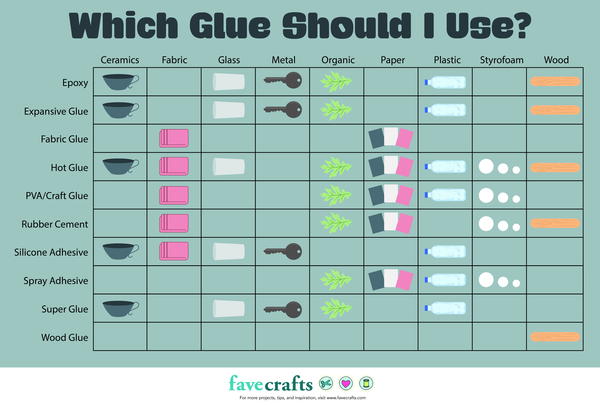

The Best Glue for Paper Crafts
For crafting with paper, the best choice will always be a glue that's thin and quick drying. Glue sticks work particularly well because they are less likely to make the paper buckle. Plus, they don't cause a giant mess, which is great for when you're crafting with kids.
In general, use these types of glue with paper crafts and scrapbooking:
- Glue sticks
- Tacky glue
- PVA glue
- Glue dots
- Spray adhesives

The Best Glue for Plastic
Plastic can be kind of tricky when it comes to glue. Depending on what the plastic is made out of, it can be pretty difficult to stick it to something else. Relatively, plastic is also not very porous, so it can be difficult for some adhesives to atttach to the surface of plastic.
We suggest using these glues for plastic:
- Epoxy
- Hot glue
- Solvent cement
- Acrylic adhesives
- Superglue
- Expansive glue
- PVA glue

The Best Glue for Fabric to Fabric
When it comes to crafting with fabric, making the right glue choice is everything. You want a glue that's sturdy but not one that will bleed through the fabic and ruin the project. You also want a glue that's going to stand up well to the washing machine!
It's important to note that superglue and certain other types of cyanoacrylate adhesives are often best avoided with certain types of fabric -- especially cotton. When superglue comes in contact with cotton, a chemical reaction occurs that causes the cotton to combust!
Our friends at AllFreeSewing also have a guide specifically for fabric. Read to learn the best glue for fabric (and the worst), why, and with images showing the results.
Here are the best types of glue for fabric:
- Fabric glue
- Hot glue
- PVA glue
- Mod podge
- Rubber cement

The Best Glue for Wood Crafts
Glues used on wood need to be particularly sturdy and longlasting. Often wood glues take a long time to set completely, so make sure you have a clamp or vice at hand!
These are the best glues for wood crafts:
- Epoxy
- Waterproof PVA glue
- Superglue or other cyanoacrylate adhesives
- Animal glue
- Rubber cement

The Best Glue for Glass
When it comes to crafting with glass, there are so many things to keep in mind. Since glass is so heavy, you want an adhesive that will hold a lot of weight. Its smooth surface also means that it can be tricky to get glue to stick to glass.
The glue that you use might also need to be water resistant and dishwasher safe. And most importantly, you're probably going to want a glue that will dry clear!
Here are the glues we recommend for glass:
- Cyanoacrylate-based glass glue
- Clear epoxy
- Superglue
- E6000

The Best Glue for Metal
With metal, it's important to clean the surface of the metal before you apply the adhesive. Metals often attract dirt and debris, which can make it difficult for the adhesive to stick. You should also keep in mind that oils from your fingers might prevent metal glues from sticking.
Here are the glues we recommend for metal:
- Epoxy
- Superglue or other cyanoacrylate adhesives
- Silicone adhesives
- Expansive glue

The Best Glue for Styrofoam
While there are glues that are made specifically for styrofoam, they can be hard to find. In general, the best types of glue to use on styrofoam are ones that won't dissolve or corrode the surface.
If you use hot glue or warm glue, proceed with caution; these glues work well with styrofoam, but styrofoam does not always take the heat well.
These are the glues we recommend for styrofoam:
- PVA glue
- Rubber cement
- Spray adhesive
- Hot glue or warm glue

The Best Glue for Ceramics
If you need to use glue on ceramic, chances are it's because you've broken something. (Don't worry; it happens to all of us.) You will need a glue that's extra strong! Luckily, ceramic usually has a pretty porous surface, so many glues will work well.
Here are the types of glue we recommend for ceramic:
- Epoxy
- Superglue or other cyanoacrylate adhesives
- Expansive glue
- Hot glue
- Silicone adhesives

Other Common Craft Glue Questions
Can you use Gorilla Glue on paper?
The answer to this question depends on the type of Gorilla Glue that you have. The original Gorilla Glue formula is probably not your best option for paper crafting. While it will stick to paper, Gorilla Glue is very strong and is an expansive glue. It's probably best to choose something that's a little lighter but still strong, like a cyanoacrylate adhesive such as superglue.
Which glue dries that fastest?
Cyanoacrylate glues (also called superglues or CA adhesives) are known for drying very quickly. The brand of glue does not typically make a difference in how fast your CA adhesive will dry.
What causes glue to dry?
It depends on the type of glue! Most glues dry because of exposure to air (which is why glue doesn't stick to the inside of the bottle). However, superglues (and other cyanoacrylate adhesives) harden when they come in contact with moisture.
Which craft glues are non-toxic?
Typically Tacky glue, glue sticks, wood glue, and white glue are your best choices for non-toxic adhesives. If you're crafting with kids, these glues should always be your go-tos.
Which craft glues are waterproof?
Popular waterproof and water resistant glues include:
- Most two-part epoxies
- Fabric glues
- Flass glue
- Jewelry glue
- E600
The Glue Glossary: Types of Craft Glue and Other Adhesives
Here is a guide to the types of glue and adhesives used in crafting. Find the right kind of glue to use for your craft project.
- 2-Way Glue: You apply this adhesive to both surfaces you are bonding. If you apply wet to wet the bond is permanent. If you allow the adhesive to dry, apply dry to dry, the bond is temporary.
- Adhesive Dots: This double-sided adhesive is applied in a series of dots rather than a thin solid ribbon of adhesive using a tape runner.
- Adhesive Squares: This “tape” has adhesive covered with a paper backing on both sides. Remove the paper backing and apply. Adds a spot of adhesive rather than a line of adhesive like tape runners.
- Clear Lacquer: A very clear glue that can be used to bond materials or as a topcoat over a material to give the material a glass-like look.
- Decoupage Glue: Thin glue brushed onto the surface of paper as a sealer and under paper as a bonding agent.
- Dimensional Dots: A foam (can be a dot, square, or another shape) with adhesive on both sides covered temporarily with a paper backing or a solid dot of adhesive. Paper backing must be removed before use. Adds dimension. (Pop Dots)
Learn how to make this adorable card with dimensional foam shapes! You’re A Star Shaker Card Tutorial
- Double Stick Tape: This tape has adhesive on both sides, but no paper backing.
- Epoxy: Epoxies typically have two parts -- the resin and the hardener -- that are mixed together just before use. This glue is as tough as glues come, and it's great for use on plastic. What's even better is that epoxy is water resistant!
- Fabric Glue: Formulated to bond fabric without bleeding through the material and many hold up through washings.
- Foam Adhesive: Formulated to have a strong bond when adhering to craft foam or bonding craft foam to craft foam. It works well on slick surfaces.
- Foam Tape: Double stick foam where paper backing is removed to expose adhesive, used to add dimension.
- Glue Dots: Solid adhesive, usually a dot shape, that can be used to add dimension as well as to bond.
- Glue Stick: Glue in solid form inside of a tube that is rubbed onto the surface. Glue sticks are great for paper crafts and crafts that do not need to hold much weight.
- Glue Pens: Liquid glue in a handy pen applicator with various shaped tips.
- Hot Glue: A solid stick of glue that needs to be melted in order to be applied to the surface of the project. As it cools, the glue bonds and becomes solid again. Hot glue is usually melted with a hot glue gun or a glue pot.
Browse some of our favorite crafts with hot glue!
- Jewelry Glue: Designed to hold or bond heavier objects such as a bead to paper or metal to paper.
- Paper Glue: A thin-bodied glue designed to bond paper without damage to paper such as buckling or wrinkling.
- Plastic Cement: This glue works by dissolving any plastic areas it touches thus bonding two such surfaces.
- PVA Glue (polyvinyl acetate): This glue is a great multi-purpose glue! When in doubt, PVA glue is a great go-to. Elmer's glue is a great alternative to PVA if you don't have PVA on hand; just remember that Elmer's is technically only a PVA-based glue and may behave differently, based on the project.
- Rubber Cement: Glues paper without wrinkling and can be repositioned. Best not to use on photos.
- Solvent Cement: Don't confuse this cement adhesive with the more popular rubber cement! Solvent cements are great for projects with hefty and strong materials. They work by breaking down the materials that they are applied to. It's probably best to only use solvent cement on projects that specifically call for it; it can be tricky to use, very flammable, and completely permanent.
- Superglue: Also sometimes called instant glue or power glue, this type of cyanoacrylate adhesive is fast drying and strong. This chemical glue works best on small surface areas using only a small amount of glue. Superglue is best on nonporous surfaces, and it's great for use with plastics and wood.
- Tacky Glue: Very thick-bodied white glue that can bond with a hold similar to a hot glue without the heat.
- Tape Runners: A double-sided adhesive that is applied with a tape holder or runner.
- Ultra Tacky Tape: This thick, usually pink tape has an extra bond quality often used to adhere seed or mini beads and is often used for embossing lines.
- Warm Glue: In the family of hot glues, but this glue is designed to melt at a much lower temperature and is better for delicate materials like mylars, photos, tissue papers. A glue stick is inserted into a dual or warm temperature glue gun.
- White Glue: Non-toxic and non-flammable, this all-purpose glue works on most surfaces and dries clear.
What is your go-to craft glue?
Your Recently Viewed Projects
EditorLP
May 03, 2018
I definitely need to save this guide for future crafting endeavors. I use either hot glue or epoxy glue for pretty much everything, but double-checking to make sure I'm choosing the right glue for my project would only take a few seconds, and would probably raise the quality of my projects.
Mistress of All Ev il
Sep 08, 2017
I don't think I ever really take into consideration whether or not the glue I'm using is right for the project. That's probably why everything I touch practically collapses within seconds of getting it all together. Great job with such a wonderful resource, Toby. I'm definitely forwarding this to all my crafty friend and printing this out for later references (you know, assuming I decide to get back into crafting).
Mistress of All Ev il
Sep 21, 2017
An update I actually needed to use this because my mother decided to get crafty over the weekend. So A!
A Crafty Mix
Aug 23, 2017
This is super useful Toby. Thank you sooo very much for putting it all together and doing the research for us crafters. There's nothing worse than putting effort into something and then have it fall apart or even worse collapsing in a hot, yucky mess because you used the wrong glue. That's happened to me a few times playing around with styrofoam
lamecow 0322806
Feb 24, 2017
This is a wonderfully useful guide. I also find Super Glue and Wood Glue to be very useful.
michelleannbaer 63 90110
Feb 10, 2014
I want to decoupage a coffee table with old nautical maps..What glue do I use to apply maps to tabletop and what glue/sealer do I use for the top coats that will be WATER proof and Heat resisdent...ie a cup of hot coffee place on surface?
Report Inappropriate Comment
Are you sure you would like to report this comment? It will be flagged for our moderators to take action.
Thank you for taking the time to improve the content on our site.


